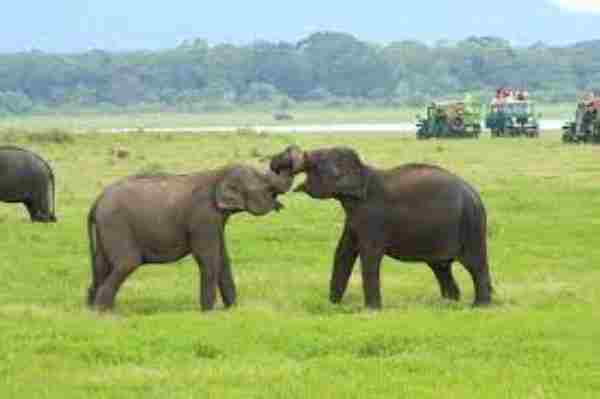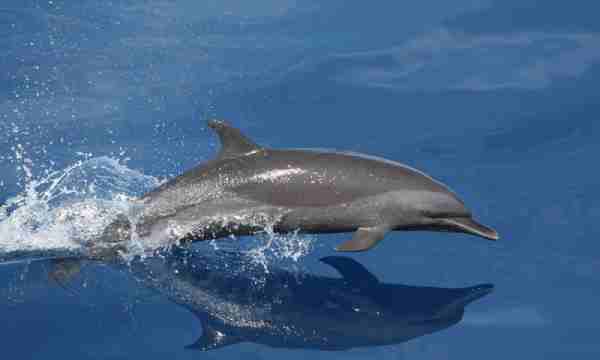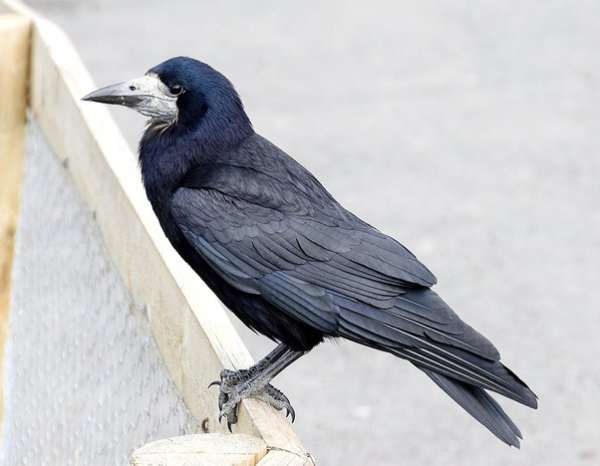The realm of animals encompasses a rich tapestry of fascinating behaviors, each offering a glimpse into their evolutionary adaptations and cognitive capacities. Among these intriguing behaviors is pondering—an enigmatic phenomenon observed in a variety of creatures. Pondering, in the context of animals, refers to moments of contemplation, reflection, or apparent deep thought demonstrated through their actions or expressions.
From the thoughtful gaze of a primate to the seemingly introspective behavior of an elephant, we enter into a captivating exploration of the subtle intricacies of pondering animals. This article embarks on a voyage into the mysterious world of pondering behaviors, aiming to shed light on the potential thought processes and emotions that contribute to these intriguing actions. Join us as we delve into this captivating journey, unraveling the enigma of pondering animals and gaining a deeper understanding of the cognitive landscapes within the diverse animal kingdom.
Table of Contents
Defining Animal Intelligence:
Animal intelligence encompasses the diverse range of mental abilities displayed by animals. It involves problem-solving, learning, memory, reasoning, adaptability, and complex decision-making. The degree of intelligence varies across species, each exhibiting unique cognitive capacities adapted to their ecological niche.
Understanding animal intelligence provides valuable insights into their behavior, interactions, and the evolutionary pathways that have shaped their minds. By exploring the nuances of animal intelligence, we unravel the depths of their cognitive world and appreciate the incredible diversity of thought processes that exist beyond human comprehension.
The Cognitive World of Animals:
The cognitive world of animals is a realm brimming with complexity and ingenuity. Animals showcase a broad spectrum of cognitive abilities, ranging from instinctual behaviors to sophisticated problem-solving. Studies have revealed astonishing feats of memory in birds, complex social structures in primates, and impressive spatial reasoning in various species.
The intricacies of their cognitive capacities shed light on their perceptual abilities, emotional experiences, and their strategies for survival and interaction within their environments. Delving into the cognitive world of animals helps bridge the gap between human and non-human minds, challenging our understanding of intelligence and consciousness and fostering a deeper appreciation for the intelligence that thrives throughout the animal kingdom.
Great Apes (e.g., chimpanzees, gorillas, orangutans):

Great apes, including chimpanzees, gorillas, and orangutans, exhibit remarkable intelligence and complex social behaviors. They engage in tool usage, demonstrate problem-solving skills, and display emotional intelligence.
Chimpanzees, for instance, use tools to extract insects or obtain food, showcasing their ability to plan and adapt. Their social structures involve intricate hierarchies and communication systems, highlighting their capacity for cooperation and empathy within their communities.
Elephants:

Elephants, known for their exceptional memory and emotional depth, exhibit remarkable intelligence. They demonstrate problem-solving abilities, navigate complex social structures, and display empathy towards others, even across species. Their memory helps them locate water sources and remember migration routes crucial for their survival.
Elephants showcase emotions such as grief, joy, and compassion, emphasizing their cognitive and emotional complexity. Their intricate social bonds and cooperation within herds underscore their intelligence and capacity for understanding social dynamics.
Dolphins:

Dolphins are renowned for their high intelligence, complex communication, and social behaviors. They exhibit problem-solving skills, learn from their environment, and demonstrate advanced cooperation. Dolphins display a level of curiosity and playfulness, indicative of their cognitive flexibility.
They utilize tools, work collaboratively in hunting, and showcase an understanding of symbolic language. Their communication abilities involve a complex system of sounds and body movements, suggesting a high level of social and cognitive sophistication. Dolphins’ capacity to learn and adapt to new situations underscores their intelligence and inquisitive nature.
Crows and Ravens:

Crows and ravens, part of the corvid family, are widely recognized for their exceptional problem-solving abilities and high intelligence. These birds exhibit complex behaviors, such as using tools to extract food, solving puzzles, and even understanding cause-and-effect relationships.
Their ability to remember and plan for the future, including storing food, showcases their cognitive sophistication. Corvids also display a level of curiosity and learning by observation, adapting to various environments and challenges they encounter. Their social interactions, often intricate and dynamic, further emphasize their intelligence and capacity to navigate complex relationships.
Octopuses:

Octopuses, despite being invertebrates, are highly intelligent marine creatures. They showcase exceptional problem-solving abilities and learning aptitude, often adapting quickly to new situations. Octopuses are known for their complex behaviors, including using tools and exhibiting a high level of curiosity about their environment.
They possess an advanced nervous system and display an array of intriguing behaviors, like mimicking other animals, suggesting a remarkable level of cognitive flexibility. Their ability to learn, remember, and respond to stimuli highlights their intelligence and adaptability within the marine ecosystem.
Parrots (e.g., African grey parrots, ravens):

Certain parrot species, especially African grey parrots, are known for their exceptional problem-solving skills and high intelligence. They possess advanced cognitive abilities, including the capacity to mimic human speech and understand simple language constructs.
Parrots showcase an ability to solve puzzles, learn through observation, and exhibit problem-solving behaviors. Their impressive memory and social interaction skills make them highly adaptable and engaging creatures, often forming strong bonds with humans and other parrots.
Border Collies (dog breed):

Border Collies are widely celebrated for their extraordinary problem-solving abilities and high level of intelligence among dog breeds. They excel in understanding and executing complex tasks, showcasing remarkable cognitive skills. Their problem-solving often revolves around tasks related to herding, agility, and obedience, where they demonstrate a keen understanding of human cues and instructions.
Border Collies possess exceptional memory, enabling them to learn quickly and remember commands or training sessions over extended periods. Their ability to assess situations, make decisions, and adapt to changing circumstances makes them stand out in the realm of canine intelligence.
Squirrels:

Squirrels exhibit impressive problem-solving skills, especially in the context of foraging and food storage. They have a remarkable memory that helps them locate buried food caches, even months later. Squirrels are adept at navigating their environment and adapting to new challenges, often displaying innovative approaches to obtain food and outwit predators. Their agility and strategic planning in finding and hiding nuts and seeds underline their cognitive abilities and resourcefulness, essential for their survival in varying habitats.
Ants:

Ants, particularly in a colony setting, showcase collective problem-solving skills and intricate organizational abilities. Each ant has a specialized role within the colony, contributing to the overall functioning and success of the community. Through pheromone trails and effective communication, ants efficiently locate food sources, build nests, and defend their territory. The division of labor and coordination within ant colonies is a testament to their intelligence and ability to adapt to changing circumstances, optimizing survival and growth for the colony as a whole.
Bottlenose Monkeys:

Bottlenose monkeys, known for their high intelligence, exhibit problem-solving abilities and complex social behaviors. They engage in tool usage, learning from peers and older individuals within their troop. Bottlenose monkeys display a level of curiosity and adaptability, enabling them to thrive in diverse environments. Their capacity to navigate complex social hierarchies, communicate effectively, and strategize their actions underscores their cognitive sophistication and evolutionary adaptability.
Communication and Social Understanding:
Communication and social understanding are fundamental aspects of animal behavior, revealing complex cognitive processes. Animals employ various forms of communication, including vocalizations, body language, and chemical signaling, to convey information and navigate their social interactions. Social structures and hierarchies are common among many species, shaping their behavior and decision-making. Understanding the cognitive foundations of communication and social dynamics offers valuable insights into their social lives, cooperation, competition, and the evolution of sophisticated behavioral strategies to navigate their complex social environments.
The Debate on Animal Consciousness:
The debate on animal consciousness delves into the philosophical and scientific exploration of whether animals possess consciousness, self-awareness, and subjective experiences. Evidence from behavioral studies, neuroscience, and ethology increasingly supports the idea that animals exhibit varying degrees of consciousness and subjective states.
This debate challenges traditional views that solely attributed consciousness to humans, highlighting the need to consider a broader spectrum of cognitive experiences across the animal kingdom. Understanding and acknowledging animal consciousness have profound ethical and moral implications, influencing our treatment and responsibility towards them.
Evolutionary Perspective on Animal Intelligence:
Animal intelligence, viewed through an evolutionary lens, provides a deeper understanding of how cognitive abilities have evolved over time in response to environmental challenges and selective pressures. Cognitive traits that enhance survival and reproduction have been favored by natural selection.
The evolutionary perspective helps elucidate the origins and adaptive significance of cognitive processes, shedding light on how animals’ mental faculties have shaped their behaviors, ecological interactions, and ultimately their evolutionary trajectories.
Human-Animal Relationship and Animal Ethics:
The human-animal relationship is intricate, shaped by a dynamic interplay of cultural, historical, social, and ethical factors. It encompasses diverse interactions, from companionship and domestication to exploitation and conservation efforts. Understanding and evaluating our relationship with animals involves exploring ethical considerations regarding their treatment, rights, and welfare.
Animal ethics examines our moral responsibilities towards animals, aiming to foster compassion, respect, and sustainable coexistence. Balancing human needs with animal welfare is a crucial challenge, necessitating thoughtful consideration of the ethical implications of our actions and policies that honor the intrinsic value of all living beings.
Future Prospects: Advancing Animal Cognition Research:
The future of animal cognition research holds immense promise, propelled by advancements in technology, interdisciplinary collaboration, and an expanding understanding of cognitive science. Cutting-edge methodologies, such as neuroimaging and behavioral experiments, offer deeper insights into animal cognition.
Comparative studies across a broader range of species and ecological contexts will unravel the diversity of cognitive abilities and their adaptive significance. Future research will likely focus on understanding the evolutionary underpinnings of cognition, the neurological basis of complex behaviors, and the implications of animal cognition for conservation, welfare, and our perception of non-human intelligence.
Final Words:
Exploring the realms of animal intelligence and cognition is a journey into the richness and complexity of life beyond humanity. It challenges our preconceived notions and offers profound insights into the astounding diversity of cognitive abilities in the animal kingdom. As we strive to unlock the mysteries of non-human minds, let us also embrace our ethical responsibility to protect and respect the myriad forms of intelligence that share our planet. In this quest, we may discover not only the astonishing cognitive capacities of animals but also a deeper understanding of our place in the intricate tapestry of life.
Reference:
- https://www.charleneprecious.com/pondering-meerkat.html
- https://www.nrdc.org/stories/massive-surge-plankton-has-researchers-pondering-future-arctic
- https://learning.rzss.org.uk/course/view.php?id=127
A motivated philosophy graduate and student of wildlife conservation with a deep interest in human-wildlife relationships, including wildlife communication, environmental education, and conservation anthropology. Offers strong interpersonal, research, writing, and creativity skills.










